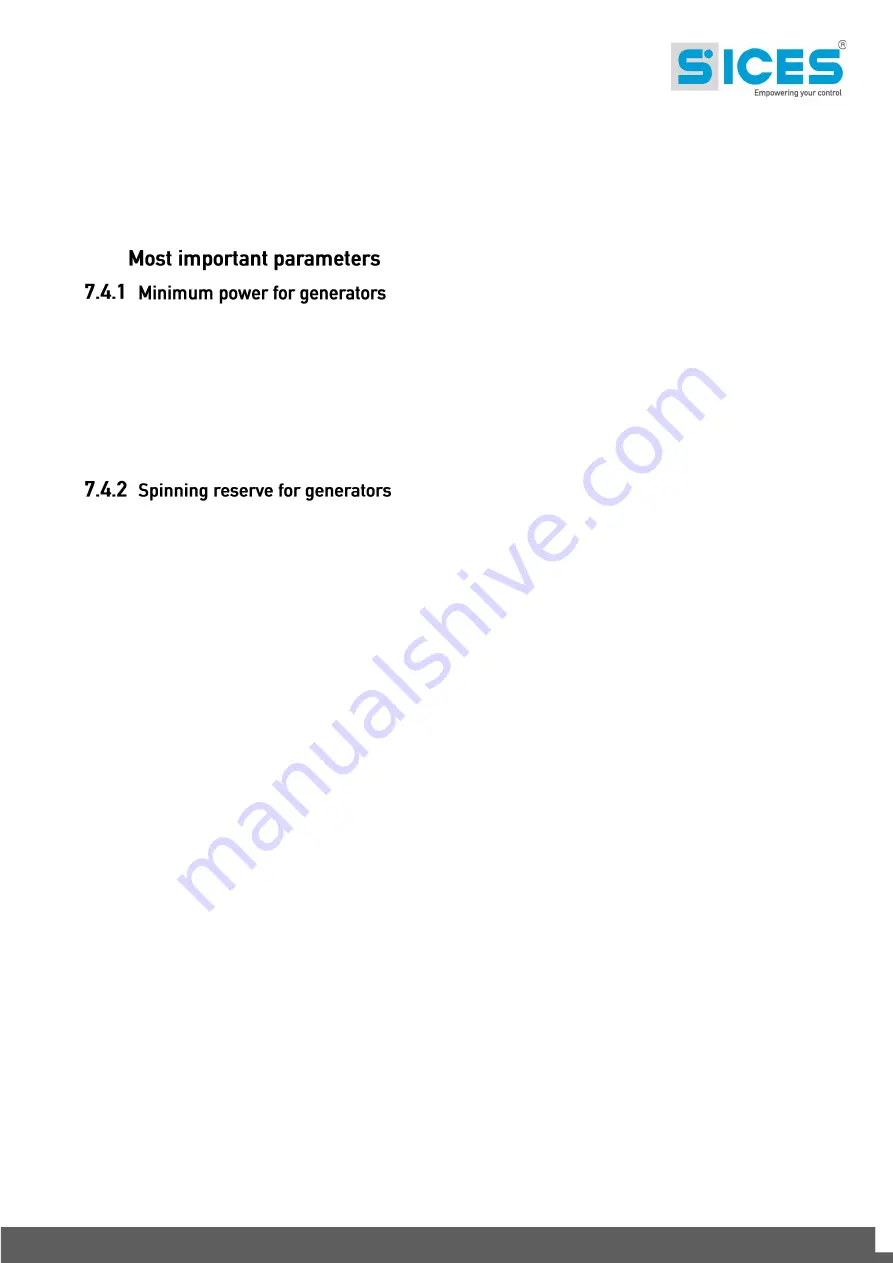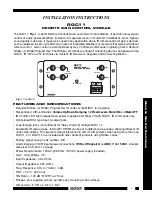
RN200 user manual 29
•
The voltages and the frequency of the common bars are within tolerance for an
appropriate time.
In fact, closing of the circuit-breaker with voltages on the bars
out of tolerance is never allowed
.
If the conditions are verified, the controller commands the start-up of the inverters as soon as
the operator presses the START button.
7.4
In order to keep the generators efficient and reduce periodic maintenance, RN200 is able to
limit the power supplied by the inverters (if needed), to keep the generators at an adequate
power level. This function is configured with parameter P.9811 ("Minimum power for
generators", menu 2.2). It is a percentage value. It is applied to the nominal power of all the
running generators.
To set this parameter, refer to the documentation of the generating sets. Set a value that does
not penalize too much the penetration of renewable sources, but at the same time allows long-
term operation of the generators without excessive wear.
Renewable sources are not considered stable and safe sources. Their production capacity is
influenced by external factors (clouds, wind etc.). For this reason, they are never used alone,
but always in combination with other sources of energy (generators, mains, accumulators),
which can integrate their production if it is not sufficient.
The production of a renewable source can also drop very quickly (for example in the case of
a cloud that covers the photovoltaic panels). In these situations, there is no physical time to
start up new generators to supply the loads: there is a risk of overloading the running
generators and inverters, and therefore generating a black-out.
The concept of SPINNING RESERVE does this. It is basically a "power reserve" that must be
guaranteed by the generators: they, as a whole, must be able to supply a further amount of
active and reactive power (in addition to what they are already supplying), just as backup for
sudden decreases in renewable sources.
The difficulty is to estimate the maximum drop that the renewable sources can suffer.
Theoretically, they could go from maximum production to zero power in a matter of seconds.
However, it is not possible to maintain a power reserve on the generators to support a total
loss of renewable sources: it would mean keeping all the generators running at all times. This
would be uneconomical from the point of view of fuel, but also from the point of view of the use
of the renewables, which should necessarily be limited to maintain a minimum power level on
the generators.
RN200 provides two parameters, which allow the operator to set a SPINNING RESERVE for
the generators in two different situations:
•
P.9821: used when generators and renewable sources operate in island mode.
•
P.9822: used when generators and renewable sources operate in parallel to the
mains.
Normally P.9822 can be set to a value lower than P.9821, because the mains should always
be able to transiently supply the power "lost" from renewable sources (waiting for the start of
the generators). In the reality, there may be limitations related to the power of the mains
transformer.
Both parameters are expressed as a percentage of the active power supplied by renewable
sources. For example, if you set P.9821 to 50%, it means estimating that, in the worst situation,
renewable sources can halve their production (in the time required to start up new generators).





































